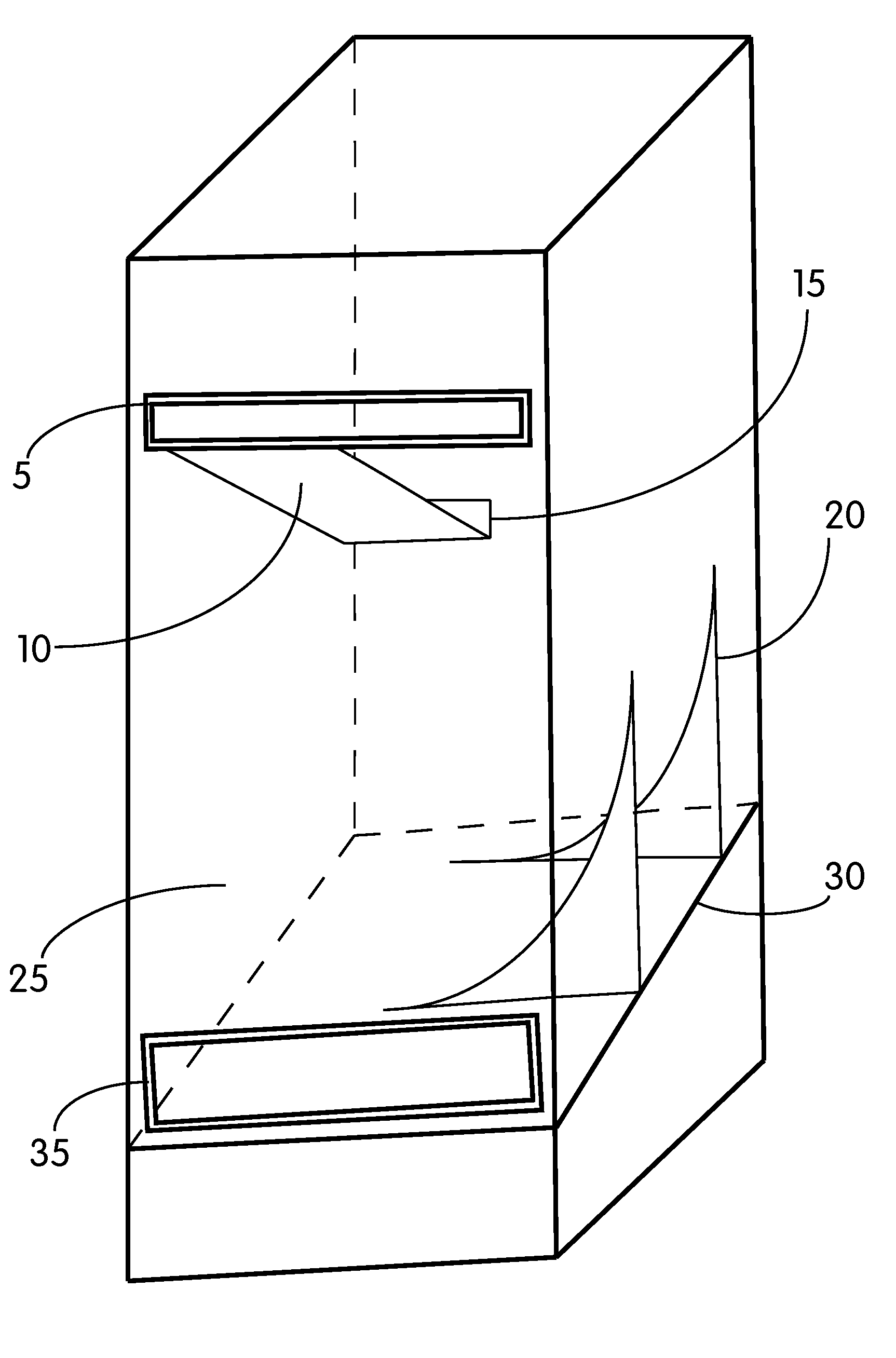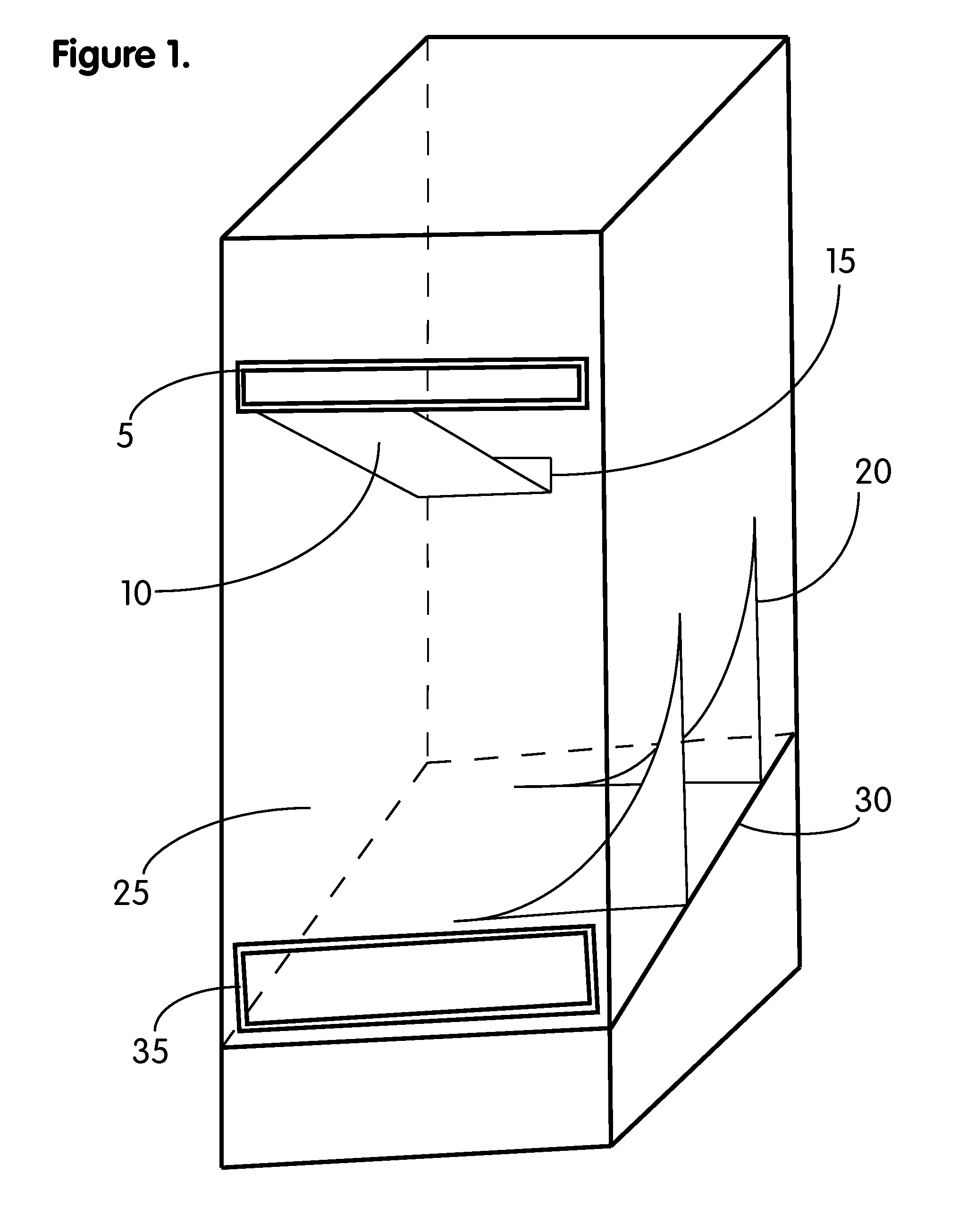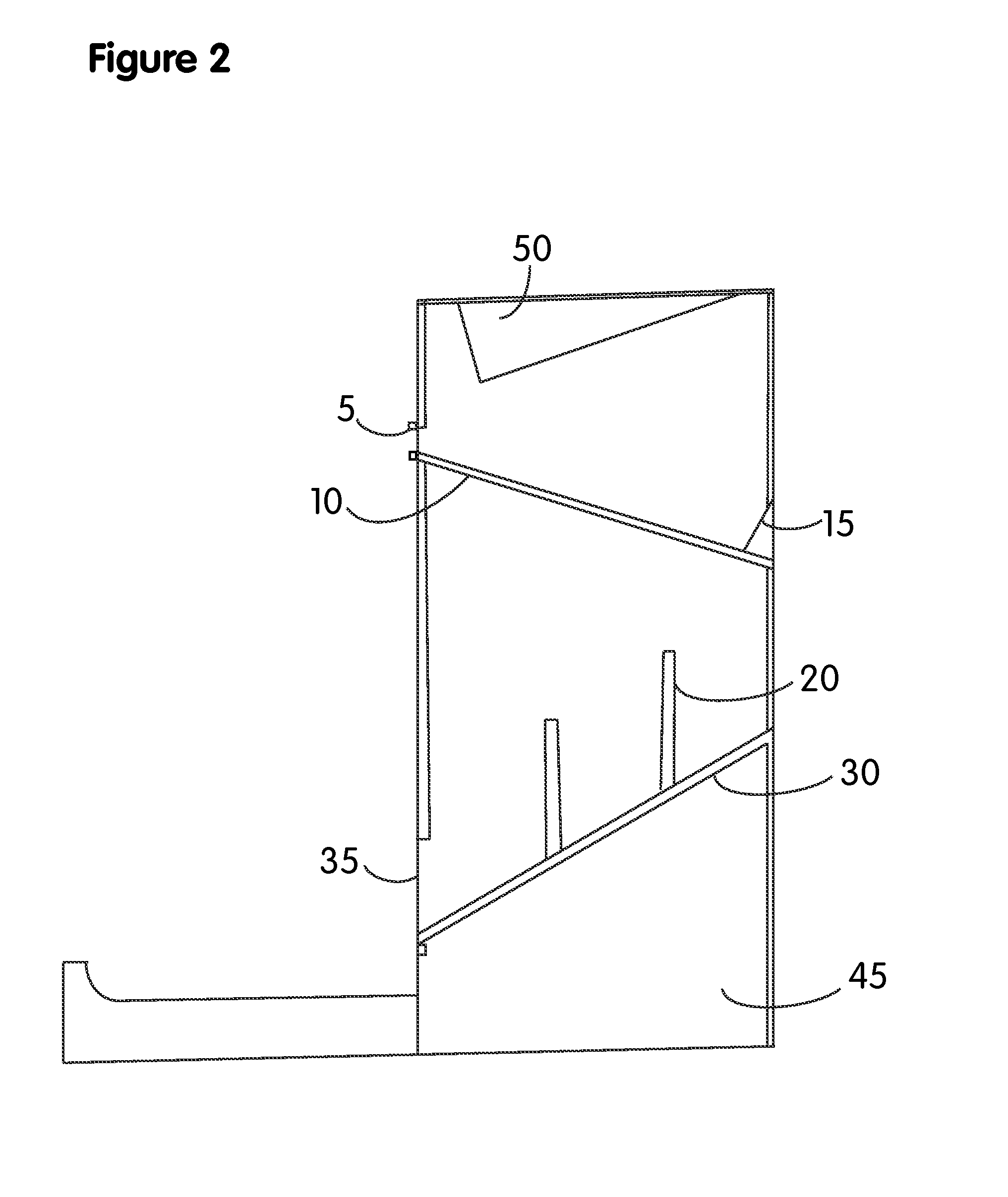Flashcard Flip Chute
a technology of flip chute and flashcard, which is applied in the direction of chutes, instruments, mechanical appliances, etc., can solve the problems of affecting the learning experience of children, etc., to achieve the effect of facilitating the horizontal rotation of the flashcard
- Summary
- Abstract
- Description
- Claims
- Application Information
AI Technical Summary
Benefits of technology
Problems solved by technology
Method used
Image
Examples
Embodiment Construction
[0012]FIG. 1 shows an embodiment of a flashcard flip chute of the present invention. As shown in FIG. 1, the flashcard flip chute comprises of an input slot 5 where flashcards can be inserted. As the flashcard enters the flip chute it is supported by a receiving platform 10 which follows a gradual decent to support the ease of inserting a flashcard. The receiving platform also has a stop at the end 15. After the flashcard has be inserted into the input slot 5 and has travelled down the receiving platform to the stop 15, it will no longer be able to balance on the receiving platform 10 due to its size which is less than 50% the size of a flashcard and not large enough to balance a flashcard, forcing the flashcard to rotate over to the right. From here, the flashcard will be caught by a plastic runner or runners 20 that will catch and stabilize the flashcard on its opposite side. As the flashcard falls it will touch the left wall of the tower 25, and then be propelled forward due to t...
PUM
 Login to View More
Login to View More Abstract
Description
Claims
Application Information
 Login to View More
Login to View More - R&D
- Intellectual Property
- Life Sciences
- Materials
- Tech Scout
- Unparalleled Data Quality
- Higher Quality Content
- 60% Fewer Hallucinations
Browse by: Latest US Patents, China's latest patents, Technical Efficacy Thesaurus, Application Domain, Technology Topic, Popular Technical Reports.
© 2025 PatSnap. All rights reserved.Legal|Privacy policy|Modern Slavery Act Transparency Statement|Sitemap|About US| Contact US: help@patsnap.com



